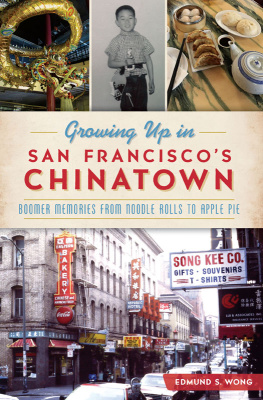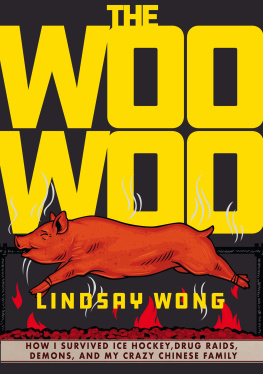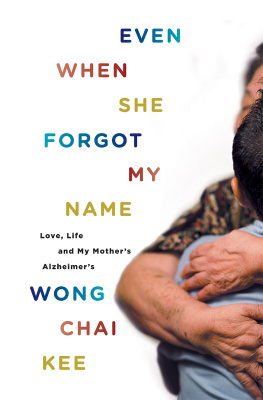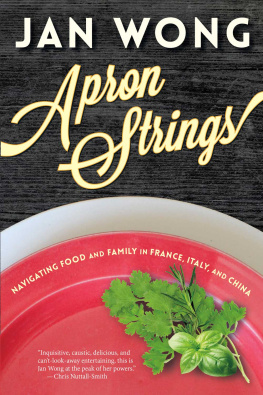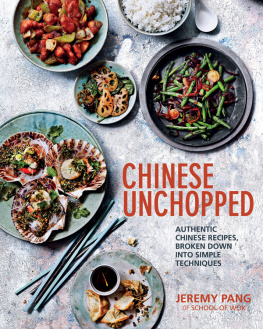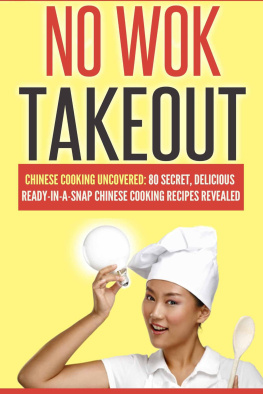

Published by The History Press
Charleston, SC
www.historypress.net
Copyright 2018 by Edmund S. Wong
All rights reserved
Front cover, top left: photo by author; top center: authors collection; top right: photo by author; bottom: the Eastern Bakery, where Chinatown residents and visitors still go for their favorite Chinese or American treats. The Republic Hotel sign is a reminder that crowded and drab singleoccupancy rooms are still home for many who live in Chinatown. Photo by author.
First published 2018
e-book edition 2018
ISBN 978.1.43966.395.0
Library of Congress Control Number: 2017958369
print edition ISBN 978.1.46713.935.9
Notice: The information in this book is true and complete to the best of our knowledge. It is offered without guarantee on the part of the author or The History Press. The author and The History Press disclaim all liability in connection with the use of this book.
All rights reserved. No part of this book may be reproduced or transmitted in any form whatsoever without prior written permission from the publisher except in the case of brief quotations embodied in critical articles and reviews.
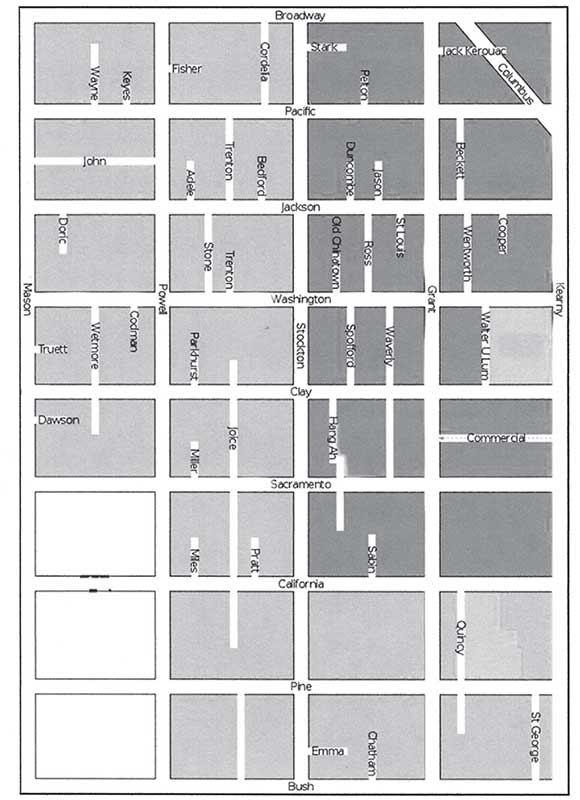
Chinatown street map. Wikimedia Commons; altered by the author.

Map from Thomas W. Chinn, ed., A History of the Chinese in California, 1969.
CONTENTS
PREFACE
Growing Up in San Franciscos Chinatown is a collection of firsthand memories, stories and anecdotes contributed by some of the citys Chinatown-raised baby boomers who were born in the late 1940s or early 1950s. Among them are American-born Chinese, or ABCs, and those who arrived in San Francisco as very young children from Hong Kong or other parts of China. Practically all of them are descendants of the Toishan region in southern China. Until the mid-1960s, Toishan was the area from which practically all Chinese landing on American shores originated. Their native language, Toishanese, consists of several variants that are much closer to Cantonese than to Mandarin. While none of those who are featured in this book can be considered famous or even well known, all have had good and productive lives. They have done well by their loved ones. Today, most of them are retired; many are now grandparents.
All of the former Chinatown kids who contributed to this book hope that their stories will stand the test of time and serve as a legacy that future generations of ABCs can appreciate. The Chinatown kids additionally hope that more than a few of the countless tourists once charmed by their San Francisco landmark neighborhood will read their stories. Such readers will surely enjoy discovering hidden and behind the scenes accounts of the Chinatown that they may have imagined but never actually got to see. Another set of readers who will find Chinatown kids interesting are the many millions who live in China and other places with large Chinese communities overseas: Taiwan, Singapore and Malaysia, among others.
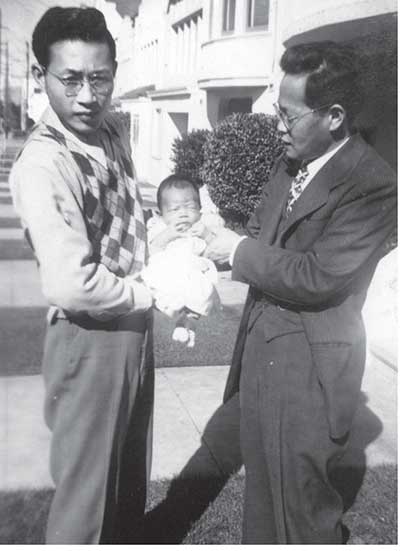
A first-generation ABC and heir to the family name, 1948. Authors collection.
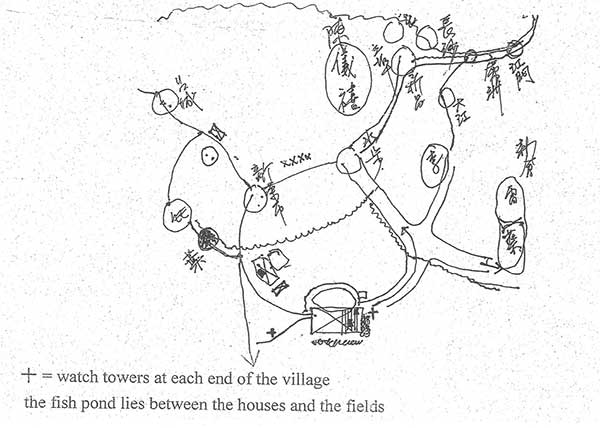
An elder brothers map drawn from memory as a guide for his sisters on their journey to find the familys ancestral village. Courtesy of Laura Wong.
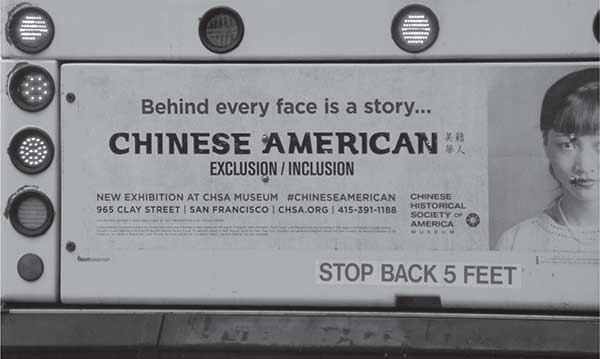
A sign on the number 55 bus going through Chinatown hopes the past will not become the future. Photo by author.
Those ABC boomers who have visited China know firsthand just how deeply the curiosity about their overseas brethren runs for the Chinese.
The issue of immigration has once again become a broad national concern, with unwelcoming attitudes and government proposals to limit or exclude certain groups from entry into the country. The exclusion laws aimed specifically at the Chinese from the 1880s until 1943 have never been far from the minds of this books Chinatown kids. That history adds to their strong wish for their stories to reach far beyond their onetime Chinatown home. They want to touch as many of those around the world as possible whose own lives were also forged by the challenges inherent in the immigrant experience.
AUTHORS NOTES
The core content of Growing Up in San Franciscos Chinatown was provided by more than fifty former residents of the neighborhood. About a dozen of these individuals communicated directly and at length with me through face-to-face interviews, phone conversations and/or email exchanges. Their words, directly quoted and, at times, paraphrased, supply the stories that fill this books nine chapters. Other contributors offered their thoughts and ideas through brief conversations, written communication about a page or less in length or social media posts, some of which were initiated by me. Among these posts were two that asked, What were some of your favorite and least favorite foods while growing up? and Did you ever work for a business owned by your family? Several other social media posts were initiated by others but capitalized on by me for further details. Some of these provided stories and anecdotes for the chapters Showtime and Movie Nights and Expectations and Discipline. Traditional sources; notably books, archived films, news articles and web articles, fill out the rest of the books chapters. Unless otherwise noted, quoted material comes from interviews I conducted.
Several contributors who wished to remain anonymous were assigned pseudonyms. The names of other persons mentioned or discussed within their narratives have also been changed. All of the information contained within their pages, however, is completely true.
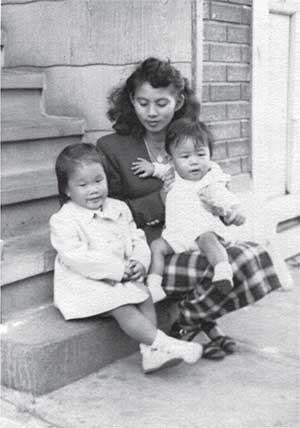
The author, his mother and his cousin Sherry Lee on the steps of Sherrys John Street family home, 1949. Authors collection.
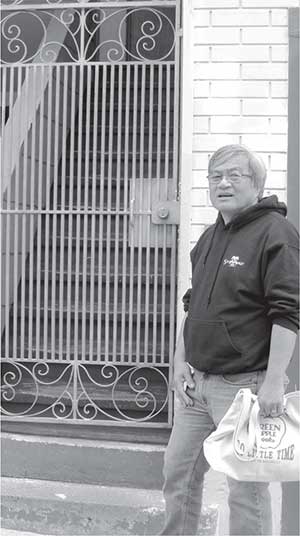
The author visiting John Street in 2015. Photo by author.
Each of those whose voice is included in Growing Up in San Franciscos Chinatown has painted a broad picture of the neighborhood and their activities within it as best they can recall. Faded or selective memories notwithstanding, any errors or misinterpretation of facts as told to me remain my full responsibility. Many socially and politically significant developments that continue to shape Chinatown and the lives of its residents moving forward took place in the neighborhood in the 1950s and 60s. As this is less a history book than it is a collective memoir, these matters are only included in this book through the words of those contributors who chose to mention them.
Next page
